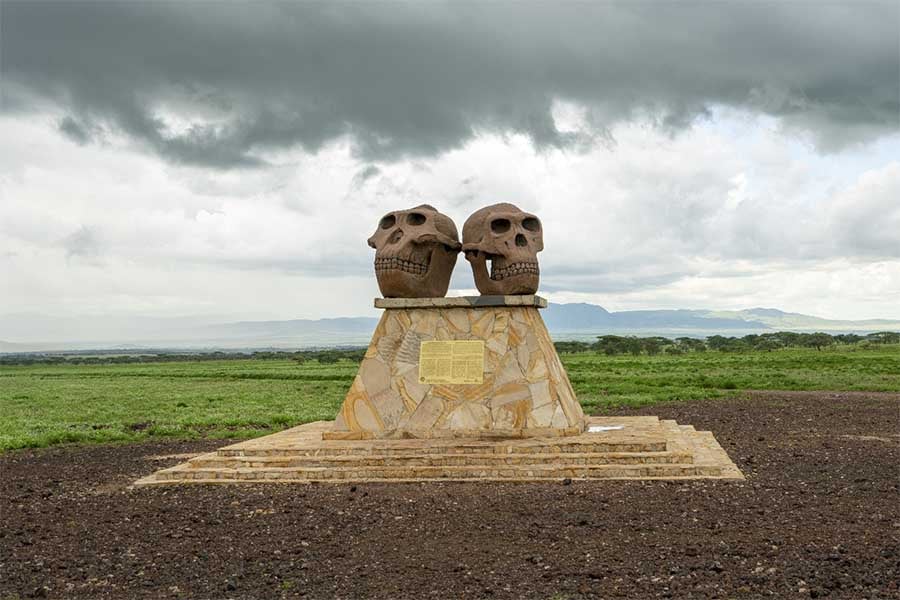
Living approximately between 2.6 million years ago and 0.6 million years ago, the Paranthropus genus is closely related to our genus, Homo sapiens, serving as a long-standing close fossil relative to our species. They lived from the end of the Pliocene to the Middle Pleistocene, and both these genera are believed to have evolved from the Australopithecus. A fascinating new study by researchers from the University of Otago in New Zealand studied Paranthropus food habits and teeth sheds new light on the evolution of prehistoric humans. The study was published in The Journal of Human Evolution and is available at ScienceDirect.

The Paranthropus DNH7 skull (found in the Drimolen Palaeocave System located 25 miles or 40 kilometers north of Johannesburg, South Africa) was the most complete Paranthropus robustus skull known until the discovery of DNH155 in 2020. (DrHerries / CC BY-SA 4.0)
Paranthropus Teeth Enamel Evidence and Hard Food Theory
For more than six decades researchers have believed that Paranthropus was a hard food item consumer, for which it evolved gigantic back teeth to help process seeds and nuts. At the same time, our most direct ancestors, the genus Homo evolved smaller teeth likely due to eating softer foods, like cooked food and meats.
In fact, assuming extremely thick tooth enamel, this hypothesis seemed airtight and one of the Paranthropusspecimens was dubbed “The Nutcracker Man” reports The Conversation.
However, the latest Otago University research study shows minute rates of enamel chipping or tooth fractures, compared to other primates like gorillas and chimpanzees, which proves the nutcracker hypothesis is wrong. Another study published in PLOS ONE in 2008 drew similar conclusions.
“By individually studying each tooth and recording the position and size of any tooth fractures, we show tooth chipping does not support regular hard food eating in Paranthropus robustus, therefore potentially putting an end to the argument that this group were hard food eaters. The results are surprising, with human fossils so far studied – those in our own genus Homo – showing extremely high rates of tooth fractures, similar to living hard object eating primates, yet Paranthropus show extremely low levels of fracture, similar to primates that eat soft fruits or leaves,” said Dr. Ian Towle an Otago University biological anthropologist who worked on the study with Dr. Carolina Loch of the Faculty of Dentistry.

Chipped and worn human teeth or primate teeth can tell us a lot about what the individual or species in question ate and how it affected their teeth. (Thitinon / Adobe Stock)
Teeth as a Means of Reconstructing History
Teeth have long been at the forefront of fossil discovery forensics, particularly because of their ability to withstand the test of time. Teeth are especially resistant to fossilization compared to bones. They are a vital link to our past, and form a key source for studying our ancestors, their dietary habits, and other related behaviors.
Scratches and other dents or chippings created on the teeth also serve as a study of the texture of food consumed by a particular species or individual. Dental plaque, the film that forms as a thin colorless lining on top of our teeth, in between our gums and teeth and generally in the oral area, serves as a cumulative record of a person’s (or animal’s) diet.
The findings in the latest study were based on the study of Paranthropus teeth and primate teeth housed in institutes and museums in South Africa, Japan and the United Kingdom. In total, the researchers examined tooth fractures by looking at more than 20,000 fossil and living primate teeth.

A reconstruction of what Paranthropus might have looked like progressing from left to right. (Cicero Moraes / CC BY-SA 4.0)
What the Evidence Tells Us
The researchers examined countless teeth included a wide range of tooth crowns to understand their mechanical and structural properties. Some teeth were collected via human donation, and non-human teeth were from museums. All of them were tested with micro-CT scans and high-powered microscopes to learn more about their enamel mineral density and structure.
The evidence clearly argued against the established “nutcracker hard food item theory.” The findings suggest that Paranthropus rarely ate hard foods! In all probability, their enormous back teeth likely evolved for other purposes, likely to chew large quantities of very tough leafy material.
“Although in recent years there has been a slow acceptance that another species of Paranthropus, Paranthropus boisei, found in East Africa, was unlikely to have regularly eaten hard foods, the notion that Paranthropus evolved their large dental apparatus to eat hard foods has persisted. Therefore, this research can be seen as the final nail in the coffin of Paranthropus as hard object feeders,” concluded Dr. Towle.
Going forward, the study conclusions lead to the question: Why did human beings have a massive reduction in tooth size compared to groups like the Paranthropus?